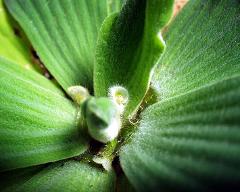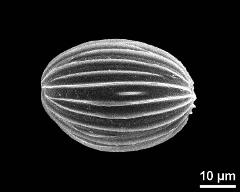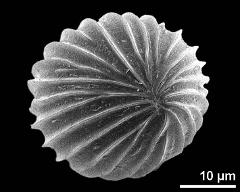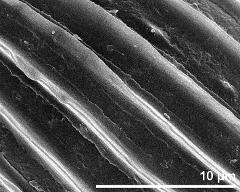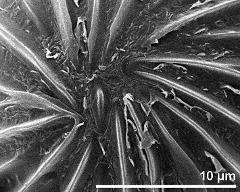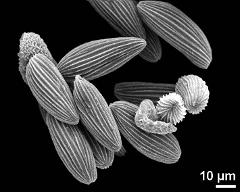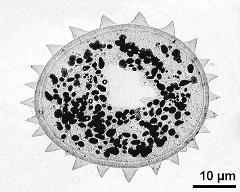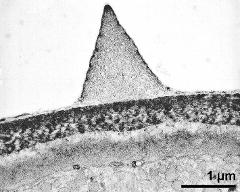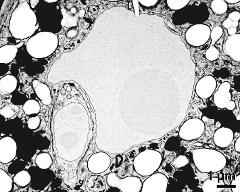Pistia stratiotes
Taxonomy: Angiospermae, Alismatales, Araceae, Pistia
Published: 2016-11-03
Pollen Description
Shape, Size and Aperture
pollen unit: monad, dispersal unit and peculiarities: monad, size (pollen unit): medium-sized (26-50 µm), size of hydrated pollen (LM): -, shortest polar axis in equatorial view (LM): -, longest polar axis in equatorial view (LM): -, shortest diameter in equatorial or polar view (LM): -, longest diameter in equatorial or polar view (LM): -, pollen class: plicate, polarity: -, P/E-ratio: oblate, shape: -, outline in polar view: elliptic, dominant orientation (LM): -, P/E-ratio (dry pollen): oblate, shape (dry pollen): -, outline in polar view (dry pollen): elliptic, infoldings (dry pollen): not infolded, aperture number: none, aperture type: no aperture, aperture condition: inaperturate, aperture peculiarities: -
Ornamentation and Structure
LM ornamentation LM: -, nexine: -, sexine: -, SEM ornamentation SEM: -, suprasculpture SEM: -, TEM tectum: -, infratectum: absent, foot layer: absent, endexine: spongy-continuous, intine: monolayered, wall peculiarities: -, supratectal element: -
Miscellaneous
pollen coatings: absent, reserves in cytoplasm: starch, cell number: -, Ubisch bodies: -
Annotations: ornamentation elements not resistant to acetolysis
Author(s) of diagnosis: Weber, Martina; Halbritter, Heidemarie
Pictures
Picture legend
- flowers of Pistia stratiotes, photographer: Halbritter, H.
- hydrated pollen - fresh, rehydrated (water) & critical point dried & sputter coated with gold, photographer: Halbritter, H.
- equatorial view - fresh, rehydrated (water) & critical point dried & sputter coated with gold, photographer: Halbritter, H.
- pollen surface - fresh, rehydrated (water) & critical point dried & sputter coated with gold, photographer: Halbritter, H.
- pollen surface at apex - fresh, rehydrated (water) & critical point dried & sputter coated with gold, photographer: Halbritter, H.
- dry pollen grains - dry, sputter coated with gold, photographer: Halbritter, H.
- pollen grain in cross section - fresh, glutaraldehyde & osmium & potassium ferrocyanide, Thiéry-test, photographer: Weber, M.
- pollen wall - fresh, glutaraldehyde & osmium & potassium ferrocyanide, Thiéry-test, photographer: Weber, M.
- generative cell and vegetative nucleus - fresh, glutaraldehyde & osmium & potassium ferrocyanide, lipid-test, photographer: Weber, M.
Literature
- (1998) Preparing living pollen material for scanning electron microscopy using 2,2-dimethoxypropane (DMP) and criticalpoint drying. Biotechnic Histochem 73: 137–143
Copyright and Citation
Cite this publication as:
Weber M., Halbritter H. 2016. Pistia stratiotes. In: PalDat - A palynological database. https://www.paldat.org/pub/Pistia_stratiotes/301841;jsessionid=B1D7DD0B36CB1C36A63A057D6BFC530D; accessed 2024-04-18

